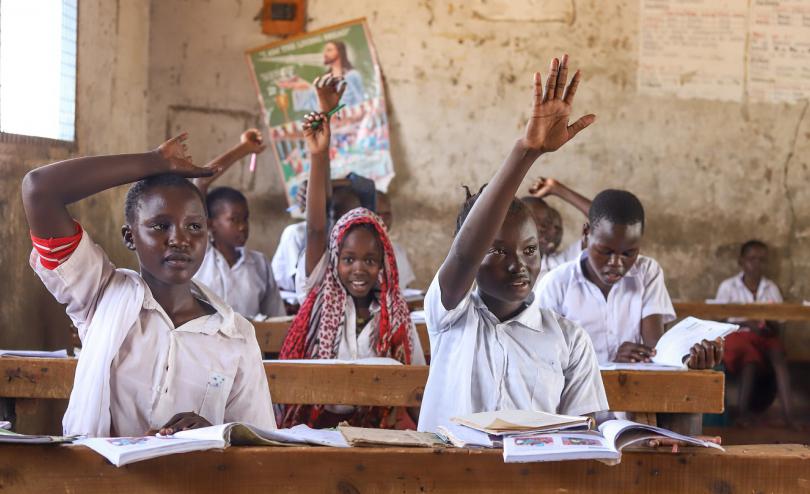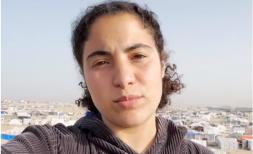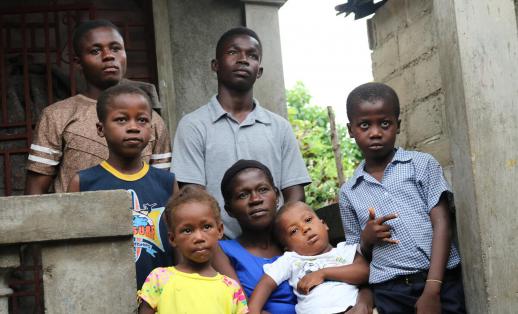Connecting children’s education needs to adequate financing

Just before the onset of Covid-19 in Kenya in March 2020, Asekon, 7, left Kakuma, a village in the arid region of Turkana, Kenya where she was in Grade One to attend her mother’s traditional wedding in a faraway village. When the virus landed in the East African country and the government introduced stringent measures to curb its spread, Asekon and her mother found themselves unable to return home.
During the pandemic she could not access any form of learning and when schools re-opened in Kenya in October 2020, she began attending classes at a nearby Early Childhood Development (ECD) Centre supported by Save the Children.
“I like learning, playing with my friends and have lunch in school. Now we have dolls, balls, learning materials and the school’s floor, which has just been repaired is no longer rough and ugly. When the pandemic came, it was difficult learning, the schools were closed, there were no teachers. We had no alternative means of learning and I thought my dream of becoming a nurse was quashed,” she says.
In Kenya, ECD Centres are pre-school or playgroup institutions for young children below the age of 5. As soon as a child turns 5, they move on to normal school programme in Grade One. So when Asekon joined the ECD centre, she was sad that she had taken a step back in her education journey.
She told Save the Children, “I am happy that I am back in school but I wish I could get a primary school to continue with my Grade One classes as the nearest primary school is far from this village and quite insecure.”

Photo: Asekon, 7-year-old pupil from Turkana, Kenya. Miriam Atonia, Save the Children
Asekon is one among many children in Kenya and around the world whose education has been disrupted by the ongoing Covid-19 pandemic. For instance, at the peak of the Covid-19 pandemic in March 2020, over 1 billion learners were affected by the indefinite school closures globally.
The education emergency in Kenya
In Kenya more than 15 million[1] children found themselves out of school and without alternative means of learning. Yet, education remains the surest path to a better life through employment or entrepreneurship. Besides playing a critical role in keeping children protected through a safe and consistent place to stay while their parents are at work, education helps children to become productive and informed citizens. Additionally, in arid areas such as Turkana where access to food and water is a major challenge, children come to school for education but stay for the food, meaning that schools are a focal point for good nutrition for children.

Photo: Grade 4 pupil from Lowarengak Girls Primary School, Turkana, who returned to school after the reopening in class. Mark Njoroge | Save the Children
Progress in education is not enough
Kenya has made good progress towards increasing access to education if the free primary and day secondary education is anything to go by. However, most recent data show that 19% of children are out of school[2] due to inequity across different groups. For instance, children living in Nairobi, the capital city, experience the highest rates of primary school completion (98%), compared to those in North Eastern Kenya (53%)[3]. However, despite the high rates in Nairobi, children in urban informal settlements are disproportionately affected and their completion rates are lower or even worse than what we see in North Eastern Kenya.
Wealth also plays a large role; compared to children in the poorest households, those in the richest households are 45% more likely to have completed primary school.[4] We know that the socio-economic issues caused by the pandemic, coupled with lengthy school closures, will see children drop out of school – especially those from the poorest families.
While countries with developed infrastructure and more internet penetration adopted online learning, the case was different for countries in sub-Saharan Africa where learning during the school closures was left to the ‘elite’.
Children from the most marginalized communities including those with special needs and disabilities, displaced (including refugees), and girls were at a higher risk of losing the gains that had been made in education. Amidst the pandemic, governments diverted funds meant for education to coping with the pandemic. Evidence of the impact of Covid-19 pandemic is still inadequate, but initial surveys point towards learning loss, increased drop outs, girls’ being married off and many others. Children from the most marginalized communities and those from poor backgrounds particularly those in urban informal settlements unfortunately continue to be left behind.

Photo: Benzoheth, a grade 7 pupil who had no access to formal education since school closed started to work as a cobbler. Mark Njoroge | Save the Children
Need for budget allocation to education
The allocation of the national budget to education in Kenya has been on a steady increase for the last seven years and is currently above the globally recommended standard of 15-20% of the total budget.
However, the bulk of the budget allocation given to the education sector goes towards recurrent expenditure and very little is left for development work. Close to 94% of the education budget went into payment of salaries and other infrastructure investments leaving only 6% for development.[5] Allocation of adequate resources to pre-primary education, which is a devolved function, remains a major challenge as most county governments have continued to make inordinately low allocations to the sub-sector.
We have been on the forefront of advocating for increased allocations to basic education at both national and county levels. We have worked with civil society organizations to advocate for more allocations besides calling for transparency in the utilization of the allocated resources.
As President Uhuru Kenyatta joins UK Prime Minister Boris Johnson for the Global Education Summit tomorrow, Kenyan children like Asekon together with many other in 90+ countries will be counting on their leaders to make pledges for domestic and international financing to help transform education systems.
This summit is a once in a lifetime opportunity to mobilise the financing needed to tackle the global learning crisis and ensure a safe return to school and learning for children.








